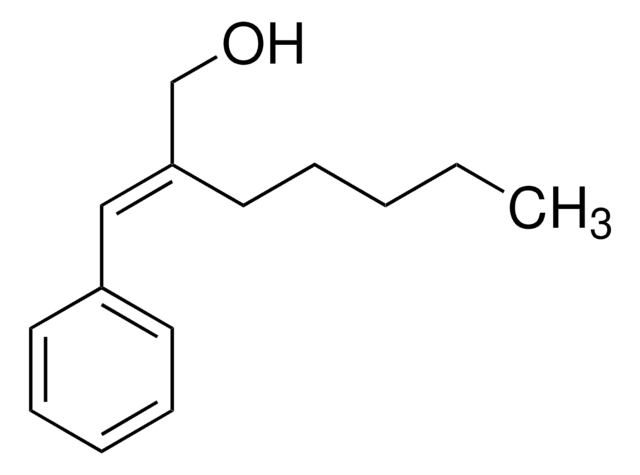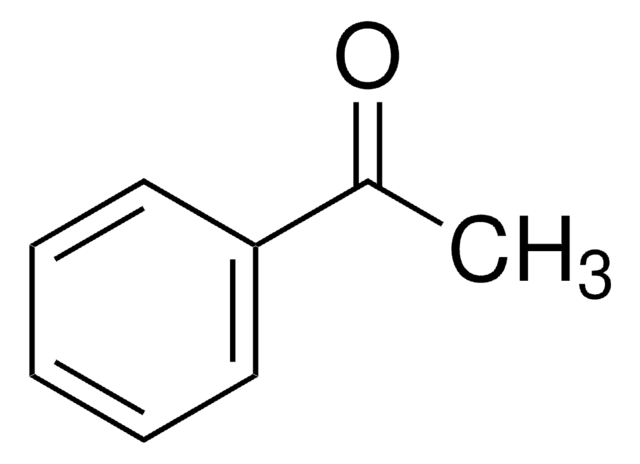64397
α-Amylcinnamaldehyde
mixture of cis and trans, analytical standard
About This Item
Productos recomendados
grado
analytical standard
Nivel de calidad
Análisis
≥98.0% (GC)
caducidad
limited shelf life, expiry date on the label
técnicas
HPLC: suitable
gas chromatography (GC): suitable
índice de refracción
n20/D 1.557 (lit.)
n20/D 1.557
bp
287-290 °C (lit.)
densidad
0.97 g/mL at 25 °C (lit.)
aplicaciones
cleaning products
cosmetics
environmental
flavors and fragrances
food and beverages
personal care
formato
neat
cadena SMILES
[H]C(/C(CCCCC)=C/C1=CC=CC=C1)=O
InChI
1S/C14H18O/c1-2-3-5-10-14(12-15)11-13-8-6-4-7-9-13/h4,6-9,11-12H,2-3,5,10H2,1H3/b14-11+
Clave InChI
HMKKIXGYKWDQSV-SDNWHVSQSA-N
¿Está buscando productos similares? Visita Guía de comparación de productos
Aplicación
Envase
Palabra de señalización
Warning
Frases de peligro
Consejos de prudencia
Clasificaciones de peligro
Aquatic Chronic 2 - Skin Sens. 1
Código de clase de almacenamiento
10 - Combustible liquids
Clase de riesgo para el agua (WGK)
WGK 2
Punto de inflamabilidad (°F)
294.8 °F
Punto de inflamabilidad (°C)
146 °C
Elija entre una de las versiones más recientes:
¿Ya tiene este producto?
Encuentre la documentación para los productos que ha comprado recientemente en la Biblioteca de documentos.
Nuestro equipo de científicos tiene experiencia en todas las áreas de investigación: Ciencias de la vida, Ciencia de los materiales, Síntesis química, Cromatografía, Analítica y muchas otras.
Póngase en contacto con el Servicio técnico









